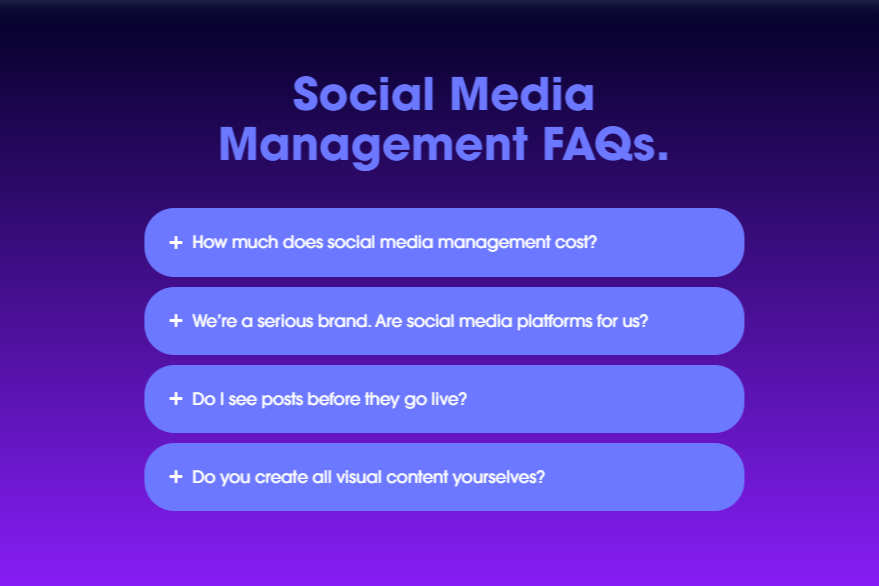What Is A SEO Content Calendar
Creating a content calendar is a crucial part of any successful content marketing strategy. It helps you plan and organise your content creation efforts, ensuring that you produce high-quality content that resonates with your target audience and ranks well on Google.
An SEO content calendar is essentially a schedule that outlines the topics, keywords, and publishing dates of your content. It helps you stay on track and ensures that you’re consistently producing content that aligns with your SEO goals.
To create an effective SEO content calendar, you need to understand the relationship between SEO, content, and calendar. SEO involves optimising your content for search engines, while content refers to the actual material you produce. The calendar is the tool you use to organise and schedule your content.
The first step in creating an SEO content calendar is to identify the keywords you want to target. These are the phrases that your target audience is searching for on Google. You can use keyword research tools to identify the most relevant and high-traffic keywords for your niche.
Once you have your keywords, you can start planning your content around them. This involves brainstorming topics that align with your keywords and creating a schedule for when you’ll publish each piece of content.
It’s important to keep in mind that your SEO content calendar should be flexible and adaptable. You may need to adjust your schedule based on changes in your target audience’s needs or changes in Google’s algorithm.
What Is a SEO Content Calendar
If you want to improve your website’s traffic, authority, ranking, conversions, and leads, you need to create an SEO content calendar. An SEO content calendar is a schedule of planned content that is optimised for search engines. This calendar helps you to plan, organise, and execute your content marketing strategy effectively.
A content calendar is essential because it helps you to:
Stay organised: With a content calendar, you can plan your content in advance and stay organised. You can schedule your content around important dates, events, and holidays.
Stay consistent: Consistency is key when it comes to SEO. By having a content calendar, you can ensure that you are publishing content regularly and consistently.
Optimise your content for search engines: An SEO content calendar helps you to plan your content around keywords, topics, and themes that are relevant to your audience. This helps you to optimise your content for search engines and improve your ranking.
Measure your results: With a content calendar, you can track your content’s performance and measure your results. You can see which pieces of content are performing well and which ones need improvement.
Setting Goals for Your Content Strategy
To create an effective SEO content calendar, you need to start by setting clear goals. Goals help you to focus your efforts and ensure that you are creating content that meets the needs of your audience and supports your overall business objectives.
When setting goals for your SEO content calendar, it’s important to consider the following entities:
Goal
What do you want to achieve with your SEO content? Do you want to increase traffic to your site, generate leads, or promote a particular product or service? Your goals should be specific, measurable, and aligned with your overall business objectives.
Site
What are the key areas of your site that you want to focus on with your SEO content? Are there particular pages or sections that need more attention? Understanding the structure and content of your site will help you to create a content calendar that supports your site’s goals.
People
Who is your target audience? What are their needs, interests, and pain points? Understanding your audience is essential for creating content that resonates with them and drives engagement.
Process
What resources do you have available for creating and publishing content? Who will be responsible for creating, editing, and publishing content? Having a clear process in place will help you to stay on track and ensure that your content is delivered on time and to a high standard.
By setting clear goals for your SEO content calendar, you can create a roadmap for success and ensure that your content is aligned with your overall business objectives.
Keyword Research for SEO Content Calendar
When creating an SEO content calendar, it’s crucial to conduct thorough keyword research. This process helps you identify the keywords and phrases your target audience is searching for and allows you to create content that aligns with their needs and interests.
To begin your keyword research, start by brainstorming a list of topics and themes relevant to your business or industry. Then, use a keyword research tool to identify the most popular and relevant keywords related to these topics.
When choosing keywords, consider both the search volume and difficulty. High search volume keywords are desirable, but they may also be highly competitive, making it difficult to rank for them. On the other hand, low search volume keywords may be easier to rank for, but they may not drive as much traffic to your website.
It’s also important to consider the intent behind the keywords you choose. Are people searching for information, products, or services related to these keywords? Understanding the intent behind a search query can help you create content that meets the needs of your audience and drives conversions.
Once you’ve identified your target keywords, create a spreadsheet or document to track them. Include the keyword, search volume, difficulty, and any notes or ideas for content related to each keyword. This will help you stay organised and ensure that you’re creating a diverse range of content that targets different keywords and topics.
Choosing Topics for Your SEO Content Calendar
The topics you choose should be relevant to your target audience, address their pain points, and align with your business goals. Here are a few tips to help you choose the right topics for your SEO content calendar:
Research Your Audience
Before you start brainstorming topics, it’s essential to understand your target audience. You should research their interests, pain points, and search behaviour to create content that resonates with them. You can use tools like Google Analytics, social media insights, and keyword research to gain insights into your audience’s behaviour.
Brainstorm Topics
Once you have a good understanding of your audience, it’s time to start brainstorming topics. You can use various techniques like mind mapping, competitor analysis, and keyword research to come up with ideas. Make sure your topics align with your business goals and are relevant to your target audience.
Use Multiple Sources
When researching your topics, it’s essential to use multiple sources. You can use industry publications, blogs, forums, and social media to gain insights into what’s trending in your industry. You can also use keyword research tools to identify popular search terms related to your business.
Address Pain Points
Your content should address your audience’s pain points. You can use the insights you gained from your research to create content that solves their problems. By addressing their pain points, you can establish yourself as an authority in your industry and build trust with your audience.
Use a Variety of Formats
To keep your content calendar fresh and engaging, it’s essential to use a variety of formats. You can use blog posts, videos, infographics, and social media posts to keep your audience engaged. By using a variety of formats, you can appeal to different learning styles and keep your audience interested.
By following these tips, you can create an SEO content calendar that resonates with your target audience and helps you achieve your business goals.
Creating Your SEO Content Calendar
There are a few key steps you should follow to ensure that your calendar is effective and efficient. Here are some tips to help you get started:
Determine Your Content Goals
Before you start creating your content calendar, it’s important to determine your content goals. What do you want your content to achieve? Are you looking to increase website traffic, generate leads, or improve your search engine rankings? Once you have a clear idea of your content goals, you can start planning your content calendar accordingly.
Choose a Schedule
Next, you’ll need to choose a schedule for your content calendar. Will you be publishing content daily, weekly, or monthly? It’s important to choose a schedule that is realistic and achievable, based on your available resources and the amount of content you plan to publish.
Plan Your Content
Once you have your goals and schedule in place, it’s time to start planning your content. Start by brainstorming topics that are relevant to your audience and your business. You can also use keyword research to identify topics that are popular in your industry. Then, start creating a list of content ideas for each month of the year.
Add Key Dates
In addition to planning your content, it’s important to add key dates to your content calendar. This might include holidays, industry events, or product launches. By adding these dates to your calendar, you can ensure that your content is timely and relevant.
Review and Adjust
Finally, it’s important to regularly review and adjust your content calendar. This will help you stay on track and ensure that your content is meeting your goals. You may need to adjust your schedule or content topics based on feedback from your audience or changes in your industry.
By following these steps, you can create an effective SEO content calendar that will help you achieve your content goals and improve your search engine rankings.
Using Templates for Your Content Calendar
Using a template for your SEO content calendar can save you time and effort. A template is a pre-designed document that you can use as a starting point for your own calendar. There are many different types of templates available, including those for Google Sheets and Microsoft Excel.
One of the benefits of using a template is that it can help you stay organised. A well-designed template will have all the necessary columns and rows for you to input your data, such as the date, topic, keywords, and target audience. This can help you keep track of your content and ensure that you are meeting your SEO goals.
Another benefit of using a template is that it can save you time. Instead of starting from scratch each time you create a new calendar, you can simply use a pre-designed template and customise it to meet your needs. This can help you get your content out faster and more efficiently.
When choosing a template, it’s important to consider your specific needs. For example, if you are using Google Sheets, you may want to choose a template that is designed specifically for that platform. This can help you take advantage of all the features and functions that Google Sheets has to offer.
In addition, you may want to choose a template that is customisable. This can allow you to add or remove columns and rows as needed, and make other changes to the design of the calendar. This can help you create a calendar that is tailored to your specific needs.
Organising Your SEO Content Calendar
Once you have collected all the necessary information for your SEO content calendar, it’s time to organise it in a way that makes sense for your team. Here are some tips to help you get started:
Use a Project Management Tool
Using a project management tool, such as Asana, can help you keep track of all your tasks and deadlines. You can create tasks for each piece of content, assign them to team members, and set due dates. This will help you stay on top of your content creation process and ensure that everything is completed on time.
Create a Spreadsheet
Creating a spreadsheet is an effective way to organise your SEO content calendar. You can create columns for the content title, keyword, due date, status, and more. This will help you keep track of all your content in one place and make it easy to update and share with your team.
Colour Code Your Calendar
Colour coding your calendar can help you visualise your content plan and make it easier to understand. You can use different colours to represent different content types, such as blog posts, videos, or social media posts. This will help you see at a glance what content is coming up and when.
Set Realistic Deadlines
Setting realistic deadlines is crucial for keeping your content creation process on track. Make sure you give yourself and your team enough time to research, write, and edit each piece of content. This will help you avoid rushing and producing low-quality content.
Review and Update Regularly
Reviewing and updating your SEO content calendar regularly is important to ensure that it remains accurate and up-to-date. Make sure you review your calendar at least once a month and make any necessary adjustments. This will help you stay on top of your content creation process and ensure that everything is running smoothly.
Content Types to Include in Your SEO Content Calendar
When creating an SEO content calendar, it’s important to include a variety of content types to keep your audience engaged. Here are some content types to consider:
Articles
Articles are a great way to showcase your expertise and provide value to your readers. They can cover a wide range of topics and can be written in various formats, such as how-to guides, listicles, and opinion pieces.
Blog Posts
Blog posts are a staple of content marketing and are great for driving traffic to your website. They can be used to share news, updates, and insights about your industry or company.
Ebooks
Ebooks are longer-form content pieces that provide in-depth information on a particular topic. They can be used as lead magnets to gather email addresses and build your email list.
Podcasts
Podcasts are a popular form of content that allows you to connect with your audience on a more personal level. They can be used to share interviews, discussions, and insights about your industry or company.
Videos
Videos are a highly engaging form of content that can be used to showcase your products or services, provide tutorials, or share industry insights. They can be shared on social media platforms, embedded on your website, or used in email marketing campaigns.
Incorporating a mix of these content types into your SEO content calendar can help keep your audience engaged and drive traffic to your website.
Scheduling and Publishing Your SEO Content
Now that you have created your SEO content calendar, it’s time to schedule and publish your content. This step is crucial to ensure that your content is published on time and reaches your target audience.
The first thing you need to do is set a publication date for each piece of content on your calendar. This date should be based on your content strategy and the goals you want to achieve. You can use a tool like Google Calendar or Trello to keep track of your publication dates and deadlines.
Once you have set the publication date, you need to work backwards and set a due date for each piece of content. This will give you enough time to research, write, edit, and optimise your content before it’s published. Make sure you give yourself enough time to complete each task, and don’t forget to factor in time for revisions and feedback.
You can publish content on your own website, guest post on other websites, or share it on social media. Make sure you choose the right platform based on your target audience and goals.
If you are publishing on your own website, make sure you optimise your content for SEO. Use relevant keywords, meta descriptions, and tags to improve your search engine rankings. You can also use a plugin like Yoast SEO to help you optimise your content.
Finally, make sure you stick to your publication schedule and deadlines. Consistency is key when it comes to SEO content, and publishing on a regular basis will help you build a loyal audience and improve your search engine rankings.
Reviewing and Updating Your SEO Content Calendar
Once you have created your SEO content calendar, it is important to regularly review and update it to ensure it remains relevant and effective. By doing so, you can ensure that your content strategy is aligned with your business goals and targets the right audience.
To review your SEO content calendar, start by assessing the performance of your existing content. Use analytics tools to track metrics such as page views, engagement rates, and conversions. This will help you identify which pieces of content are performing well and which ones need improvement.
Next, evaluate your target audience and their needs. Are there any gaps in your content that need to be filled? Are there any topics that are no longer relevant or need to be updated? By answering these questions, you can ensure that your content remains relevant and valuable to your audience.
Once you have identified areas for improvement, update your SEO content calendar accordingly. This may involve adding new topics, updating existing content, or removing outdated content. Be sure to set clear goals and objectives for each piece of content to ensure that it aligns with your overall content strategy.
Finally, regularly review the status of your SEO content calendar to ensure that it remains on track. Use project management tools to track progress and ensure that deadlines are met. This will help you stay organised and focused on your content goals.
Conclusion
Creating an SEO content calendar is a crucial step in your content strategy. By planning and scheduling your content in advance, you can ensure that your marketing strategy is aligned with your business goals and objectives.
A well-planned content calendar can help you to stay organised, save time, and increase your ROI. It can also help you to identify gaps in your content and ensure that you are producing a variety of content types that appeal to your target audience.
When creating your content calendar, it is important to consider your marketing strategy. Your content should be aligned with your overall marketing goals and objectives. You should also consider the ROI of your content and ensure that you are producing content that is valuable to your audience.














